The 1970s was a tumultuous decade for the automotive industry. With oil crises, new emissions regulations, and changing consumer tastes, car manufacturers scrambled to adapt. Amid this chaos, many vehicles quietly slipped into oblivion without fanfare or mourning. These weren’t the legendary muscle cars or iconic designs that enthusiasts still celebrate today—these were the automotive footnotes that came and went with barely a whisper, their passing as unremarkable as their brief existence.
1. Ford Maverick Grabber
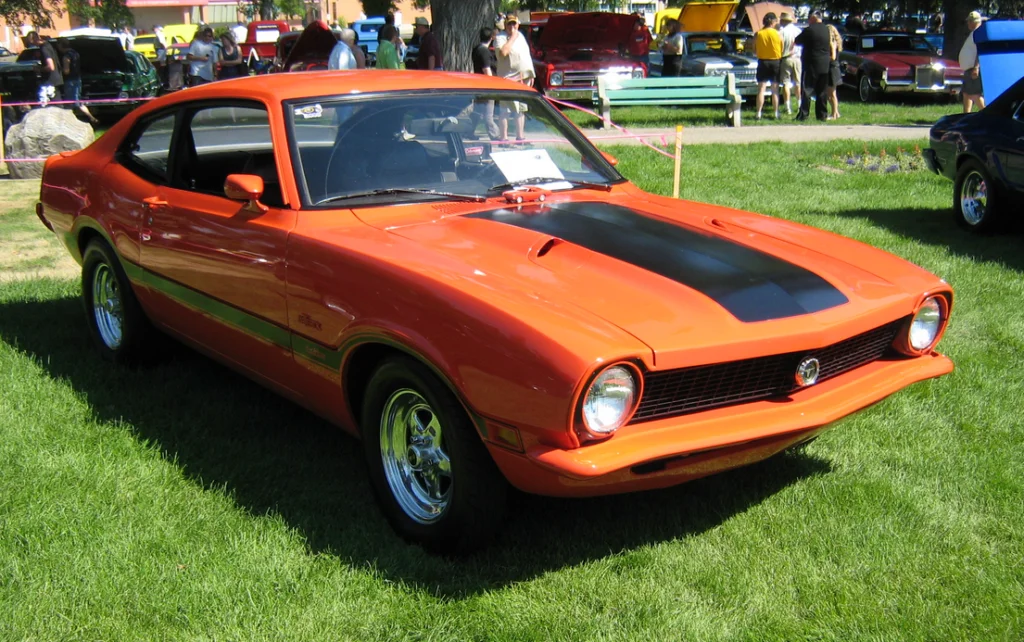
The Ford Maverick Grabber tried desperately to inject some sportiness into Ford’s budget compact offering between 1970 and 1975. With its special trim package, racing stripes, and slightly upgraded suspension, the Grabber package was Ford’s attempt to create excitement without actually delivering much additional performance. Despite initial sales success, the Grabber package was unceremoniously dropped for the 1976 model year as Ford shifted focus to its new Fairmont, and few consumers seemed to notice or care. JC Whitney goes through the subtle but impactful transformation this car went through, and how little details make a big difference.
The Maverick itself limped along until 1977, but the Grabber’s disappearance was a silent curtain call for a car that promised more than it delivered. With its anemic inline-six engine (or optional small V8) producing modest power even by 1970s standards, the car never lived up to the visual promises made by its sporty appearance package. Today, while standard Mavericks maintain a small following among classic car enthusiasts, the Grabber variant remains largely forgotten—a footnote to a footnote in automotive history.
2. AMC Matador Barcelona
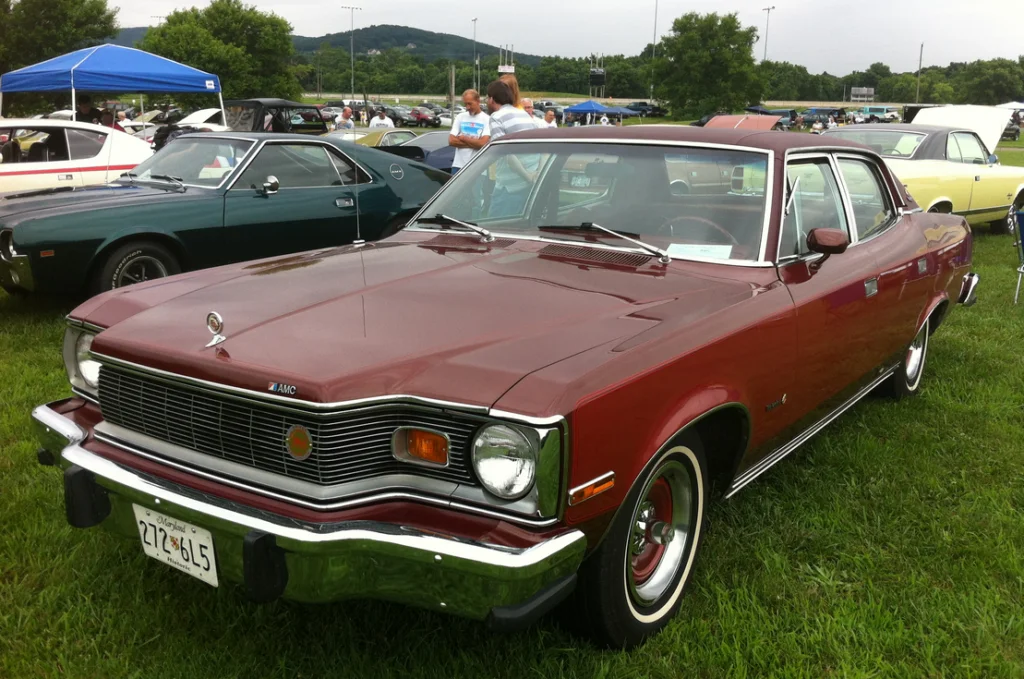
The AMC Matador Barcelona edition of 1977-1978 represented American Motors’ peculiar idea of European-inspired luxury, featuring padded vinyl roofs, opera windows, and baroque interior trim in an era already moving toward more restrained design. This oddly named special edition (which had absolutely nothing to do with Spain) was AMC’s attempt to add glamour to their midsize coupe through sheer force of random branding. With sales figures barely registering a blip against competitors like the Chevrolet Monte Carlo or Ford Elite, the Barcelona package quietly vanished after just two model years. AutoRevolution praises this vehicle as a forgotten luxury with a surprising NASCAR connection.
The Barcelona’s disappearance wasn’t mourned because few Americans had noticed its existence in the first place, with AMC’s limited marketing budget focused elsewhere. Its gaudy copper metallic or golden ginger exterior colors paired with a matching tan interior represented the design excesses of the disco era at their most pronounced. AMC would continue building the standard Matador until 1978, but the Barcelona edition remains one of the most obscure special editions from a decade full of forgettable appearance packages.
3. Plymouth Cricket
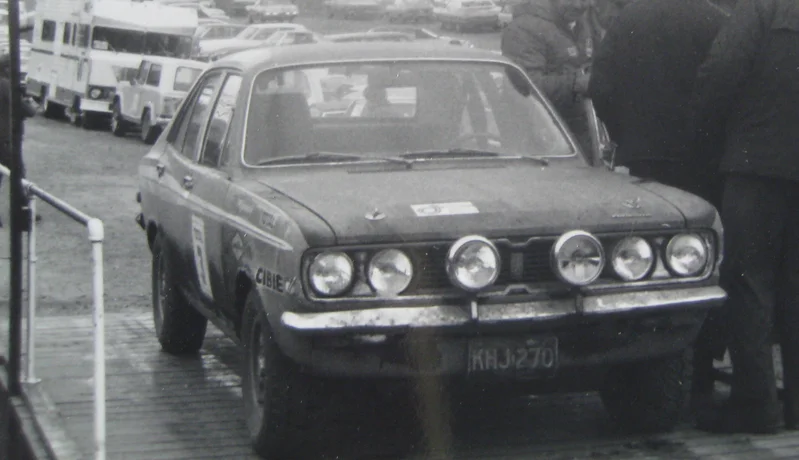
The Plymouth Cricket was Chrysler’s hastily rebadged version of the British Hillman Avenger, imported to America between 1971 and 1973 as a desperate response to the growing small car market. Plagued by quality issues, from electrical problems to rapid body rust, the Cricket failed to match the reliability standards American consumers expected, even in the 1970s. After just two years and dismal sales figures, Chrysler pulled the plug on the Cricket without so much as an apologetic press release, substituting the slightly more successful Dodge Colt as their subcompact offering. Hagerty insists that the rarity with which this car’s thought of is a mark of just how big a failure it was.
The Cricket’s departure was so quiet that many automotive historians barely acknowledge its existence, with surviving examples now extremely rare. With uncomfortable seats, questionable build quality, and underwhelming performance from its 1.5-liter engine, the Cricket represented the worst aspects of both British and American automotive engineering with none of the benefits of either. Most Crickets quickly found their way to junkyards, victims of neglect, corrosion, and general consumer indifference—making it one of the most thoroughly forgotten cars of the decade.
4. Mercury Bobcat Runabout
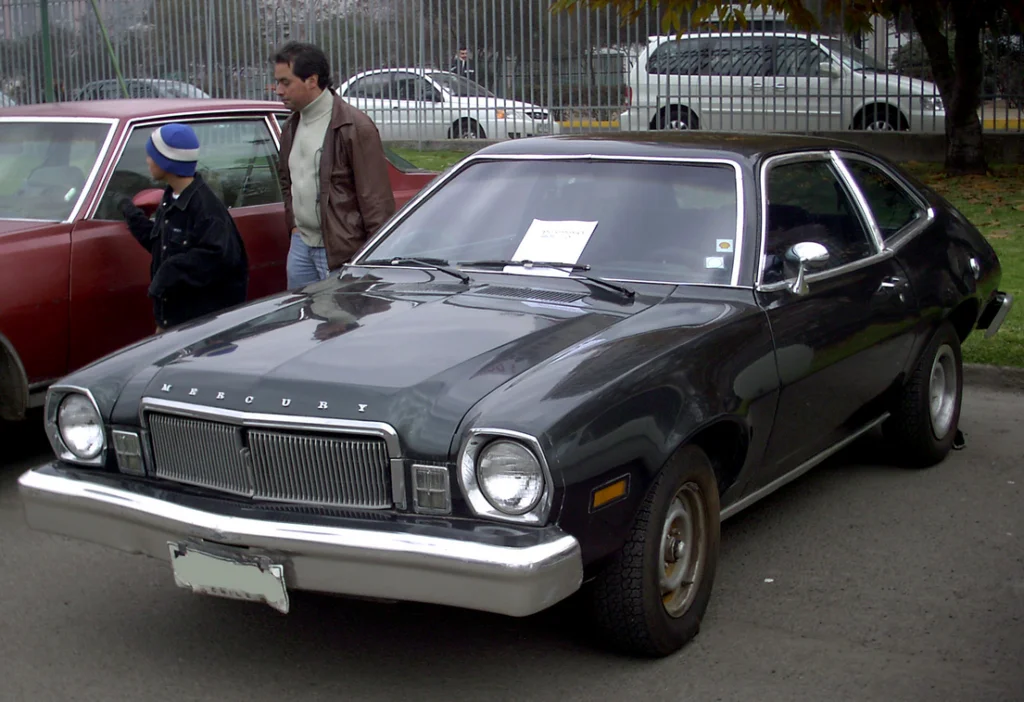
The Mercury Bobcat Runabout was little more than a cynical rebadging of the Ford Pinto with a slightly more upscale interior and a higher price tag when it debuted in 1975. The hatchback “Runabout” version attempted to add some utility to this uninspiring platform, but couldn’t escape its budget-car origins or the growing safety concerns about the Pinto’s fuel tank design. By 1980, Mercury quietly dropped the “Runabout” designation as they prepared to replace the entire Bobcat line with the more modern Lynx, with virtually no consumers noticing the change in nomenclature.
The Bobcat Runabout represented badge engineering at its most transparent, offering minimal differentiation from its Ford sibling beyond slightly different taillights and a more premium-looking grille. With lackluster performance from its underpowered engines and a driving experience best described as “adequate,” the Runabout version of the Bobcat failed to create any emotional connection with consumers. Its disappearance caused no disturbance in the automotive marketplace, as most potential buyers had already turned their attention to increasingly popular imported compacts with superior engineering and fuel economy.
5. Dodge Rampage
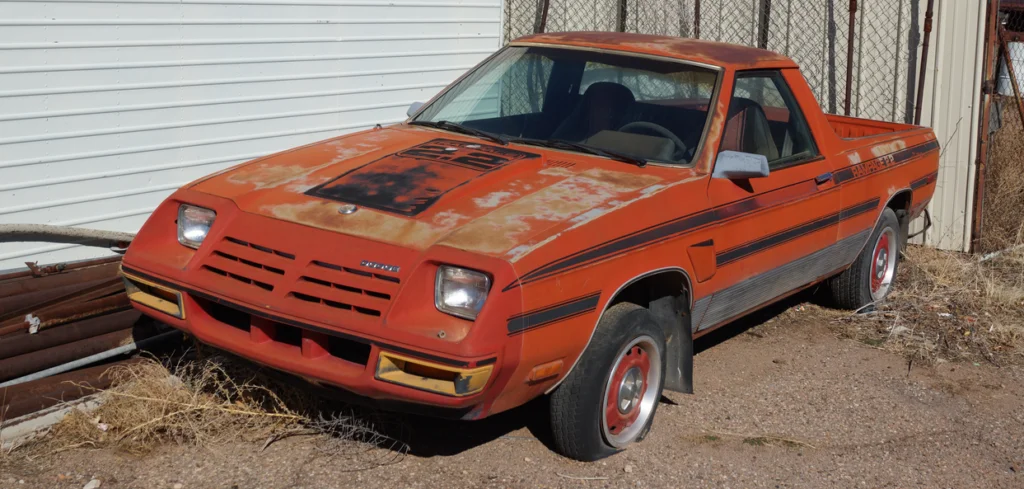
The Dodge Rampage was Chrysler’s bizarre experiment in creating a car-based pickup truck, launching in 1982 but rooted in late-1970s design thinking as it was based on the L-body Dodge Omni/Plymouth Horizon platform. With its front-wheel drive layout and unibody construction, the Rampage broke from traditional pickup design while offering modest utility with its small bed. After three years of dismal sales, Dodge discontinued the Rampage with little fanfare, having sold fewer than 17,000 units in its final model year.
Although technically an early 1980s model, the Rampage’s development and design philosophy were pure 1970s Chrysler, representing the company’s scattershot approach to product planning during the economic challenges of the era. The vehicle suffered from an identity crisis, with neither the comfort of a car nor the capability of a proper truck, leaving potential customers confused about its purpose. The automotive press barely noted its passing, and today the Rampage exists primarily as an obscure trivia answer rather than a fondly remembered model.
6. Chevrolet Monza Towne Coupe
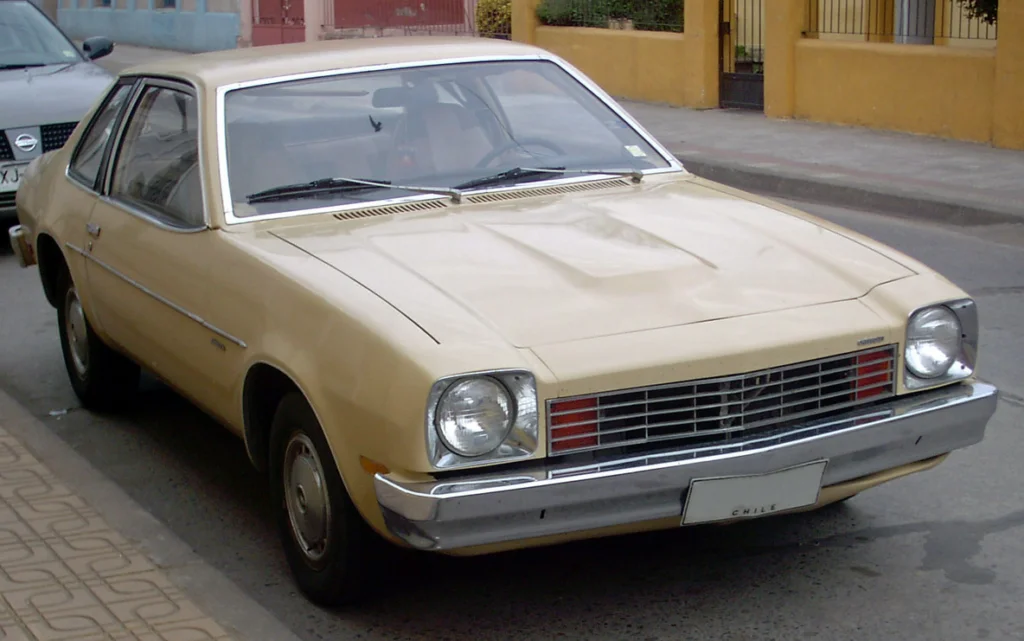
The Chevrolet Monza Towne Coupe debuted in 1975 as an awkward attempt to add luxury touches to GM’s H-body compact car platform, featuring opera windows and a more formal roofline than its sportier hatchback sibling. Despite Chevrolet’s attempt to capitalize on the success of the personal luxury coupe segment, the Towne Coupe’s cramped interior, reliability issues, and dated styling failed to capture consumer interest in meaningful numbers. By 1979, the Towne Coupe body style quietly disappeared from the Monza lineup, replaced by more conventional coupe and hatchback designs.
The Towne Coupe represented Detroit’s confused response to changing market conditions, trying to combine small-car efficiency with luxury pretensions during the fuel-conscious late 1970s. With its unusual proportions and awkward styling details, the car looked like what it was—a compromise that satisfied neither luxury car buyers nor economy-minded consumers. Most Towne Coupes quickly depreciated into obscurity, with even dedicated Monza enthusiasts (themselves a rare breed) generally preferring the cleaner lines of the hatchback version.
7. Mercury Montego MX Villager
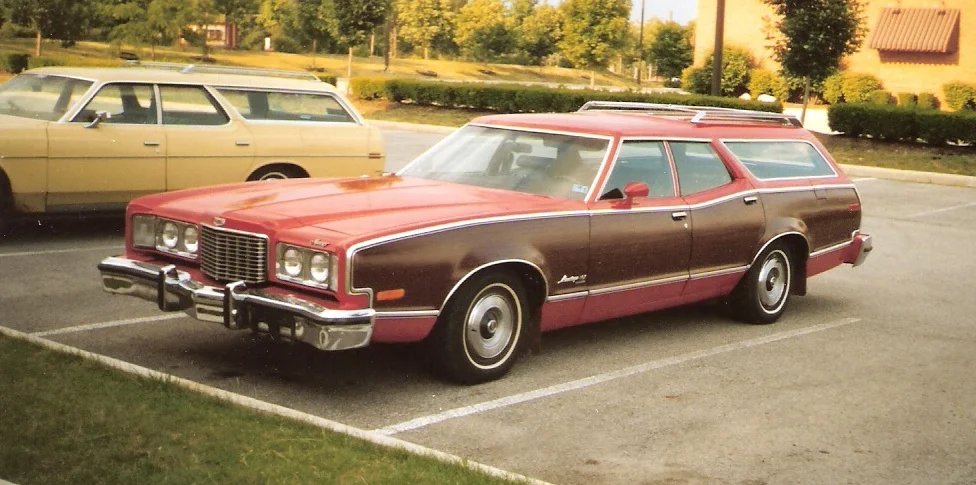
The Mercury Montego MX Villager wagon represented the peak of faux-wood station wagon excess when it was introduced in the early 1970s, featuring vast expanses of simulated woodgrain exterior paneling and colonial-inspired luxury touches. Despite initial sales success, the model gradually lost ground to more efficient wagons as fuel prices rose following the 1973 oil crisis. When Mercury rebranded its mid-size lineup from Montego to Cougar for 1977, the MX Villager wagon variant silently vanished from showroom floors, its passing unmarked by either automotive press or consumer outcry.
The Montego MX Villager had become an anachronism by mid-decade, its thirsty V8 engines and heavyweight construction increasingly out of step with market trends. Its vinyl woodgrain appliqués and ornate detailing represented a vision of suburban affluence that was rapidly being replaced by more European-influenced design sensibilities. The wagon’s discontinuation marked the end of an era for Mercury’s family haulers, though few noticed its absence as the division shifted toward more modern and efficient designs.
8. Buick Skyhawk S/R
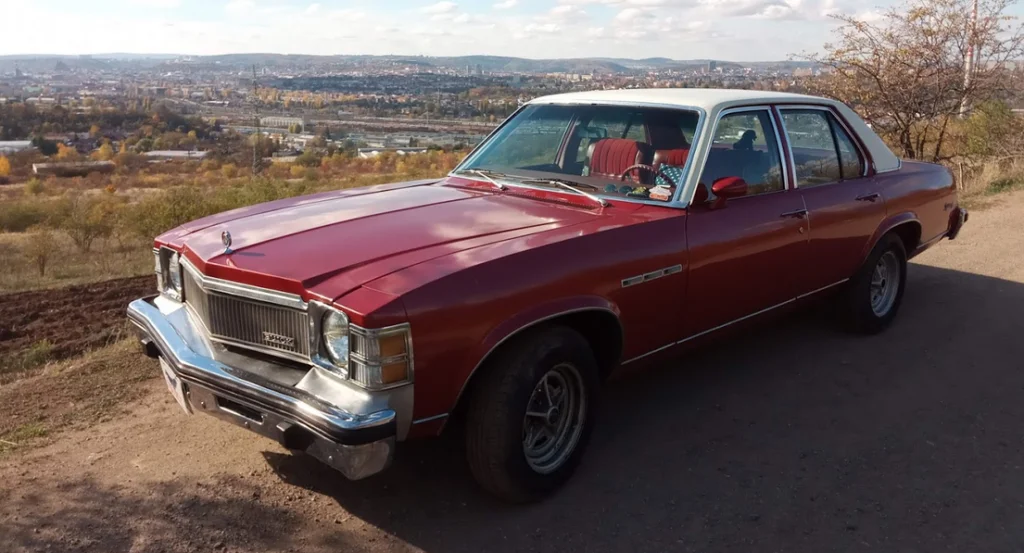
The Buick Skyhawk S/R was General Motors’ unconvincing attempt to create a European-style sport coupe on its H-body platform, complete with tape stripes, rally wheels, and modestly upgraded suspension components. Introduced in 1975 with either the underpowered Buick V6 or wheezy four-cylinder engines, the S/R package promised sporting pretensions that its chassis and powertrains couldn’t deliver. The S/R designation was quietly dropped for the 1979 model year as Buick prepared to transition to the new front-wheel-drive J-car platform, with few enthusiasts noticing or caring about its demise.
Unlike performance packages of the preceding muscle car era, the S/R offered more show than go, with minimal performance improvements over standard Skyhawk models. Its sporty aesthetic touches—including optional bold graphics and color-keyed mirrors—belied a car that was fundamentally uninspiring to drive and troubled by the quality control issues common to GM’s 1970s products. Today, while the Skyhawk itself maintains some recognition among collectors of 1970s automobiles, the S/R package remains forgotten except by the most dedicated Buick historians.
9. International Harvester Scout II Traveler
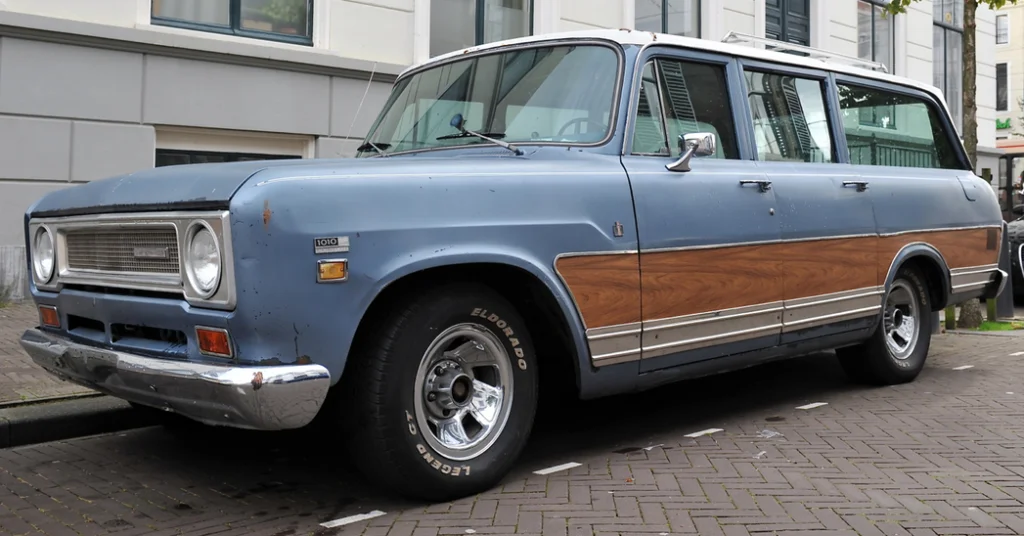
The International Harvester Scout II Traveler was a stretched version of the standard Scout II, offering additional cargo space and a third-row seat option when introduced in 1976 as the agricultural equipment manufacturer attempted to expand its consumer vehicle lineup. Despite offering genuine off-road capability and rugged construction that rivaled its competitors, International Harvester’s limited dealer network and poor marketing doomed the Traveler to obscurity. Financial troubles forced International Harvester to exit the light-duty vehicle market entirely in 1980, ending the Traveler’s brief production run without announcement or ceremony.
The Traveler represented one of the last gasps of a company better known for tractors than passenger vehicles, despite the Scout lineup’s genuine innovation and capability. With its removable fiberglass top and robust four-wheel-drive system, the vehicle was in many ways ahead of its time, predating the SUV boom that would arrive a decade later. Unfortunately, rust issues, parts availability problems, and the company’s deteriorating financial situation meant that most Travelers were worked hard and discarded, leaving few survivors to remind automotive enthusiasts of this overlooked early SUV variant.
10. Plymouth Sapporo
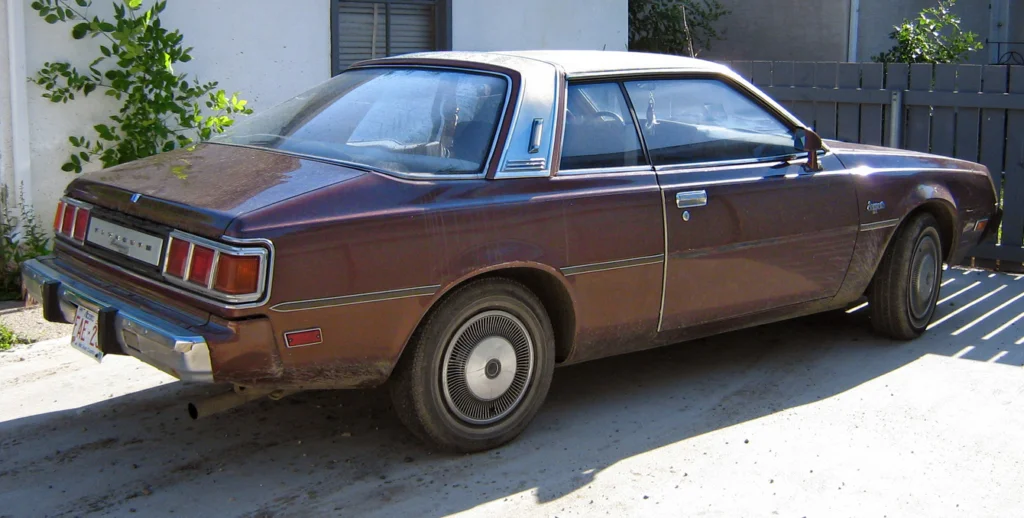
The Plymouth Sapporo was Chrysler’s captive import from Mitsubishi, sold between 1978 and 1983 as a personal luxury coupe with Japanese efficiency and reliability. Despite offering decent equipment for its price and relatively good build quality compared to Chrysler’s domestic products of the era, the Sapporo failed to establish a clear identity in the marketplace. When replaced by the more modern Conquest in 1984, the Sapporo disappeared without fanfare or nostalgic tributes, having made virtually no impression on the American automotive consciousness.
The Sapporo suffered primarily from blandness and confused marketing, with most consumers unclear whether it was meant to be a luxury coupe, sports car, or economy vehicle. Its velour interior, woodgrain dashboard, and relatively soft suspension suggested luxury aspirations, but its modest four-cylinder engine delivered neither the performance nor the refinement that luxury buyers expected. While mechanically sound by the standards of its time, the Sapporo’s forgettable styling and personality-free driving experience ensured that few were preserved by enthusiasts, making survivors today a rare sight even at dedicated 1970s car shows.
11. Chevrolet Vega GT Estate Wagon
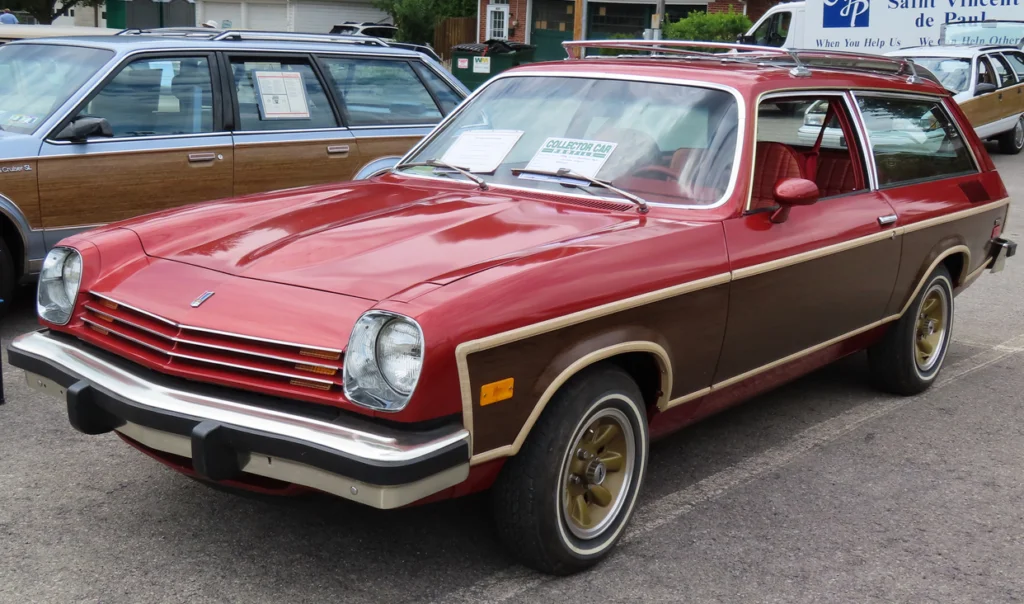
The Chevrolet Vega GT Estate Wagon combined two dubious distinctions: it was both a sporty version of one of GM’s most problematic vehicles and a compact wagon in a market increasingly turning to hatchbacks. Introduced in 1971 with simulated wood paneling and upgraded trim, the Estate Wagon variant of the already troubled Vega attempted to offer both utility and sporting pretensions in a single package. The Estate Wagon option disappeared after 1977 as Chevrolet prepared to replace the rust-prone, engine-troubled Vega with the marginally improved Monza wagon.
Even by the low standards of 1970s American compacts, the Vega GT Estate Wagon stood out for its unique combination of handling promise and disastrous reliability. The aluminum-block engine’s tendency to overheat and wear prematurely affected all Vegas, but the Estate Wagon’s additional weight exacerbated these issues while its longer roof created more body flex on rough roads. Most examples quickly succumbed to the Vega’s infamous rust problems or catastrophic engine failures, ensuring that today they’re among the rarest and least-remembered station wagons of the decade.
The automotive landscape of the 1970s was littered with models that appeared and vanished with barely a ripple in the marketplace—victims of changing regulations, shifting consumer preferences, and corporate restructuring. While enthusiasts today lovingly restore Mustangs, Camaros, and other icons of the era, these forgotten models serve as reminders of the industry’s troubled transition from the muscle car glory days to the efficiency-focused reality of later decades. Their quiet disappearances weren’t tragic losses to automotive culture but rather merciful ends to vehicles that had failed to connect with consumers in any meaningful way.


